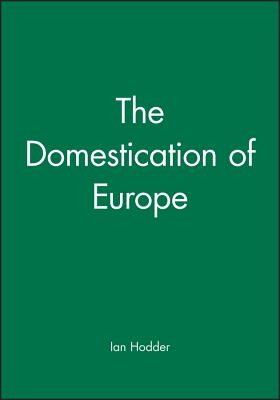
- Išsiųsime per 12–18 d.d.
- Autorius: Ian Hodder
- Leidėjas: Blackwell Publishers
- ISBN-10: 0631177698
- ISBN-13: 9780631177692
- Formatas: 15.2 x 22.8 x 1.9 cm, minkšti viršeliai
- Kalba: Anglų
- Extra -15 % nuolaida šiai knygai su kodu: ENG15
Atsiliepimai
Aprašymas
The Neolithic saw the spread of the first farmers, and the formation of settled villages throughout Europe. Traditional archaeology has interpreted these changes in terms of population growth, economic pressures and social competition, but in "The Domestication of Europe" Ian Hodder works from a new, controversial theory focusing instead on the enormous expansion of symbolic evidence from the homes, settlements and burials of the period. Why do the figurines, decorated pottery, elaborate houses and burial rituals appear and what is their significance? The author argues that the symbolism of the Neolithic must be interpreted if we are to understand adequately the associated social and economic changes. He suggests that both in Europe and the Near East a particular set of concepts was central to the origins of farming and a settled mode of life. These concepts relate to the house and home - termed "domus" - and they provided a metaphor and a mechanism for social and economic transformation. As the wild was brought in and domesticated through ideas and practices surrounding the domus, people were brought in and settled into the social and economic group of the village. Over the following millennia cultural practices relating to the domus continued to change and develop, until finally overtaken by a new set of concepts which became socially central, based on the warrior, the hunter and the wild.
EXTRA 15 % nuolaida su kodu: ENG15
Akcija baigiasi už 4d.09:35:47
Nuolaidos kodas galioja perkant nuo 10 €. Nuolaidos nesumuojamos.

- Autorius: Ian Hodder
- Leidėjas: Blackwell Publishers
- ISBN-10: 0631177698
- ISBN-13: 9780631177692
- Formatas: 15.2 x 22.8 x 1.9 cm, minkšti viršeliai
- Kalba: Anglų Anglų
The Neolithic saw the spread of the first farmers, and the formation of settled villages throughout Europe. Traditional archaeology has interpreted these changes in terms of population growth, economic pressures and social competition, but in "The Domestication of Europe" Ian Hodder works from a new, controversial theory focusing instead on the enormous expansion of symbolic evidence from the homes, settlements and burials of the period. Why do the figurines, decorated pottery, elaborate houses and burial rituals appear and what is their significance? The author argues that the symbolism of the Neolithic must be interpreted if we are to understand adequately the associated social and economic changes. He suggests that both in Europe and the Near East a particular set of concepts was central to the origins of farming and a settled mode of life. These concepts relate to the house and home - termed "domus" - and they provided a metaphor and a mechanism for social and economic transformation. As the wild was brought in and domesticated through ideas and practices surrounding the domus, people were brought in and settled into the social and economic group of the village. Over the following millennia cultural practices relating to the domus continued to change and develop, until finally overtaken by a new set of concepts which became socially central, based on the warrior, the hunter and the wild.


Atsiliepimai